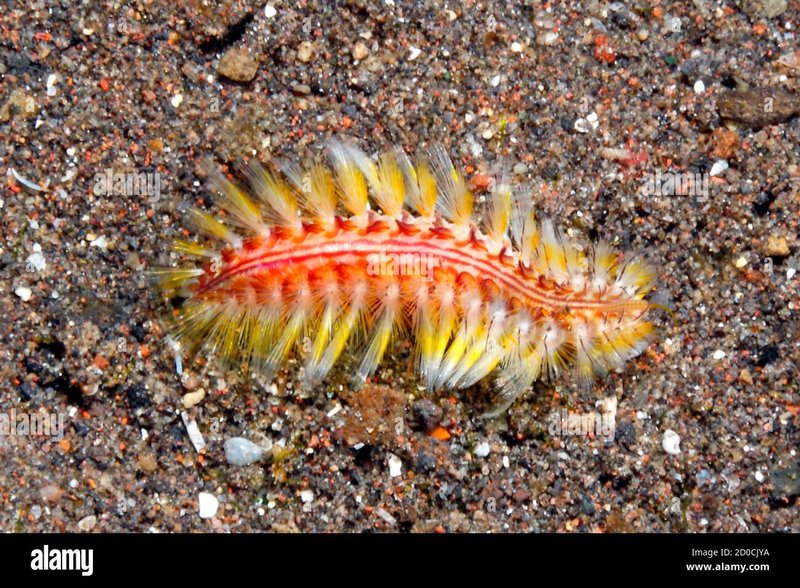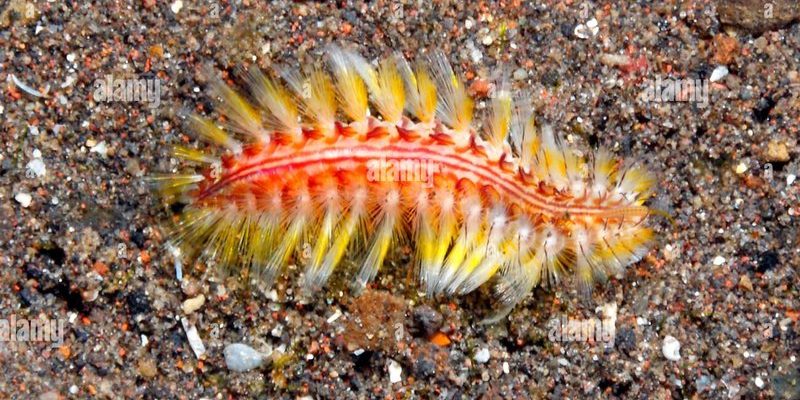
The bristle worm, part of the polychaete family, is like the Swiss Army knife of the ocean floor. They help aerate the soil, break down organic material, and even serve as food for larger marine animals. With their segmented bodies and bristles, they’re a crucial part of the underwater ecosystem. But what do those bright red tufts signify? In this article, we’ll explore what the tufts are, why they matter, and what they can tell us about the health of the ocean.
Understanding Bristle Worms
Bristle worms are remarkable creatures that are often found in shallow waters around the world. With over 10,000 species, these worms play a vital role in marine ecosystems. They can range from just a few centimeters to over a meter long! You might recognize them by their long, segmented bodies and the bristles, or chaetae, that give them their name.
One of the most intriguing aspects of bristle worms is their adaptation to various environments. They thrive in tropical reefs, muddy bottoms, and even rocky shores. The red tufts you see are actually a form of gills, which aid in respiration. Think of them as the worm’s underwater lungs, allowing it to breathe while remaining submerged.
These worms are often nocturnal, coming out at night to feed on detritus, algae, and even small animals. Their diet helps recycle nutrients back into the ecosystem, demonstrating their importance in marine food webs.
The Role of Red Tufts
So, what exactly are those **red tufts**? They are gill-like structures known as **parapodia**. Each segment of a bristle worm has these two fleshy appendages, and in many species, they’re brilliantly colored. The red color can be attributed to the presence of hemoglobin, which enhances their ability to transport oxygen.
These red tufts serve a couple of essential functions. First, they help with **respiration** by absorbing oxygen from the water. The more vibrant the color, the healthier the gills are likely to be. If you notice the color fading, it could indicate the worm is stressed or unhealthy.
Secondly, the tufts can also play a role in **locomotion**. The parapodia allow the worm to swim short distances or burrow into the ocean floor when threatened. It’s like having built-in paddles for swimming while also providing a safe haven when danger lurks.
What Red Tufts Reveal About Habitat Health
You might be wondering why the health of bristle worms and their red tufts matters. The truth is, they’re excellent indicators of environmental conditions. Scientists often study these worms to assess the health of marine habitats.
For instance, if you observe a decline in the number of bristle worms or a change in the color of their tufts, it could signal problems like pollution or habitat degradation. Bristle worms are sensitive to their surroundings, and any significant changes can impact their population.
In healthy ecosystems, you’ll typically find a diverse range of bristle worm species, each contributing to the balance of life in those waters. When monitoring a certain area, researchers might collect samples of bristle worms and analyze the condition of their tufts to gauge the overall health of the marine environment.
Common Colors of Tufts and Their Meanings
While we often focus on the bright red, bristle worms can have tufts in a variety of colors. Each color can signify different conditions or health statuses. Here’s a quick guide to what the colors might mean:
- Red: Healthy and well-oxygenated gills, indicating a thriving individual.
- Brown: Possible stress or poor environmental conditions; may need closer examination.
- Pale or Faded: Indicates health issues or possible disease; something may be affecting its environment.
- Green: Often seen in species that feed on algae, showcasing a healthy diet.
Understanding these color variations can provide vital insights for both marine enthusiasts and researchers. If you come across a bristle worm on your next beach walk, take a moment to observe those tufts. They’re more than just eye candy; they’re windows into the underwater world.
How to Care for Bristle Worms in Aquariums
If you’re thinking of keeping bristle worms in your aquarium, it’s essential to create an environment that mimics their natural habitat. These worms can be valuable cleaning crews, helping to break down waste and aerate the substrate. Here’s how to ensure they thrive:
1. **Water Quality:** Maintain proper salinity, pH, and temperature. Clear, oxygen-rich water is crucial for healthy gills. Regularly test and adjust your water parameters to prevent stress.
2. **Diet:** Bristle worms are scavengers. You can feed them sinking pellets or let them feast on leftover food. Just remember not to overfeed, as excess waste can harm water quality.
3. **Substrate:** Provide a sandy or soft substrate that allows them to burrow. They love to dig, and a happy worm is often a healthy worm!
4. **Lighting:** Since many bristle worms are nocturnal, consider dimming your aquarium lights at night or providing hiding spots where they can retreat during the day.
With the right care, not only can bristle worms help maintain a clean tank, but their stunning red tufts can also be a captivating sight in your home aquarium!
Exploring the world of bristle worms and their **red tufts** unveils a fascinating glimpse into marine life. These vibrant structures are more than just beautiful; they signify health, adaptability, and the overall state of our oceans. Whether you’re a curious beachcomber, a budding marine biologist, or an aquarium enthusiast, understanding what these tufts mean can deepen your appreciation for these unique creatures and the ecosystems they inhabit.
By recognizing the importance of bristle worms, we can take steps to protect their habitats and, in turn, the health of our oceans. Next time you spot a bristle worm, remember: those red tufts tell a story of resilience and the delicate balance of life beneath the waves.

